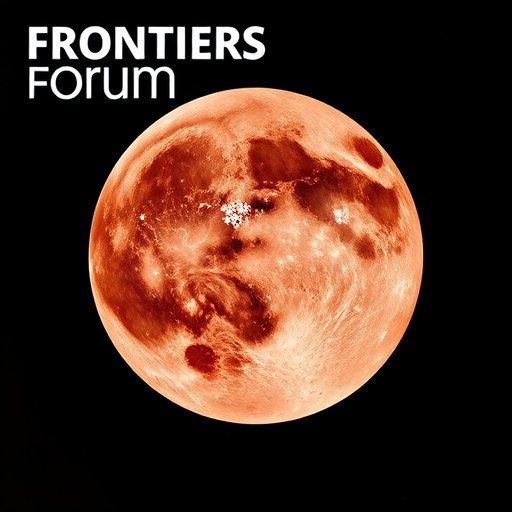The Earth BioGenome Project (EBP) represents an ambitious global scientific initiative aimed at sequencing the genomes of all known eukaryotic species on Earth. By constructing an expansive and detailed digital repository of DNA sequences, the project promises to revolutionize our understanding of biodiversity, evolutionary biology, and conservation strategies. This monumental undertaking transcends mere data collection — it is a visionary step toward preserving life on our planet amid accelerating environmental change and unprecedented biodiversity loss.
Central to the EBP’s progress is a suite of cutting-edge genomic technologies that have dramatically accelerated sequencing throughput while slashing costs. Recent advances in long-read sequencing platforms, high-fidelity assembly algorithms, and bioinformatics pipelines now enable scientists to generate high-quality reference genomes with unprecedented speed and accuracy. These technological breakthroughs allow the EBP to scale its efforts by an order of magnitude compared to previous genome projects, making the ambitious goal of sequencing 150,000 species achievable within the current decade.
A recent lead article published in Frontiers in Science offers an in-depth perspective on EBP’s strategic roadmap as the project enters its next critical phase. The article outlines refined methodologies for species prioritization, data integration, and collaborative frameworks that collectively target the rapid elucidation of the eukaryotic tree of life. By systematically mapping genomic diversity across taxonomic groups, the EBP aims to fill longstanding gaps in phylogenetic knowledge and provide a transformative resource for evolutionary and ecological research.
One of the hallmark initiatives within the project is the deployment of mobile sequencing laboratories to facilitate in-situ genomic analysis, particularly in biodiverse but resource-limited regions. This approach not only mitigates logistical constraints related to sample transport but also empowers local scientific communities, fostering capacity building and equitable access to genomic technologies. By democratizing sequencing infrastructure, the EBP embodies a paradigm shift towards inclusive science that respects sovereignty and promotes benefit-sharing with indigenous and underserved populations.
The project’s collaborative framework hinges on an unwavering commitment to open data sharing and transparent scientific exchange. Recognizing that accessibility is paramount to maximizing the utility of genomic resources, the EBP ensures that all sequenced genomes are freely available through public databases. This open-access ethos accelerates downstream research initiatives, enabling scientists worldwide to leverage high-quality genomic data for applications ranging from species conservation to biomolecular innovation.
EBP’s massive genome sequencing endeavor is poised to advance biodiversity conservation by providing actionable genomic insights into population structure, genetic diversity, and adaptive potential. With climate change and human activities intensifying extinction pressures, understanding the genetic underpinnings of species resilience is critical for designing effective conservation policies. Genomes generated by the project will serve as baseline references that inform habitat restoration, captive breeding, and disease resistance strategies at an unprecedented molecular resolution.
The initiative also confronts fundamental questions in evolutionary biology by systematically charting genomic variation across eukaryotic life. Detailed comparisons of genome organization, gene family expansions, and regulatory networks among diverse taxa will enable researchers to unravel the genetic mechanisms driving speciation, adaptation, and complexity. These insights hold promise for redefining theoretical models of evolution and enhancing predictive frameworks for biodiversity outcomes in a rapidly changing world.
Beyond its scientific impact, the Earth BioGenome Project underscores the importance of interdisciplinary collaboration between geneticists, ecologists, policy-makers, and indigenous stakeholders. Such integrative efforts are essential for aligning technological advances with ethical considerations, legal frameworks, and socio-environmental contexts. The project exemplifies how responsible science can serve as a unifying force that addresses global challenges while respecting cultural values and promoting sustainability.
The upcoming webinar scheduled for 18 September 2025 will feature prominent experts including Professors Harris Lewin and Mark Blaxter, along with Dr. Federica Di Palma, who will discuss the ways EBP’s next phase will catalyze biodiversity research and conservation. Attendees can expect detailed discussions on scaling sequencing operations, integrating ecological data, and enhancing scientific outreach, particularly towards the Global South, where biodiversity hotspots frequently coincide with limited research infrastructure.
Technically, the EBP leverages a combination of PacBio HiFi sequencing and Oxford Nanopore Technologies for generating contiguous, chromosome-level assemblies. These methods, complemented by innovative scaffolding techniques such as Hi-C chromatin conformation capture, provide near-complete genomic maps, crucial for functional annotation and downstream comparative analyses. The integration of sophisticated AI-based annotation tools further accelerates gene prediction and insight extraction from raw sequence data.
The scale and complexity of sequencing 150,000 diverse eukaryotic species demand not only technological innovation but also robust data management infrastructure. EBP’s data ecosystem incorporates cloud-based platforms and interoperable standards to facilitate seamless data ingestion, integration, and retrieval. This streamlined approach is vital for managing petabytes of sequence information, ensuring data provenance, and supporting reproducible research pipelines.
In conclusion, the Earth BioGenome Project exemplifies a transformative pursuit at the intersection of genomics, conservation, and global collaboration. By generating comprehensive genomic blueprints for eukaryotic life, the project promises to illuminate the biological diversity underpinning ecosystems and inspire new conservation strategies grounded in molecular evidence. As the EBP scales up its operations, the promise of harnessing genomic data to safeguard Earth’s biota becomes ever more tangible and urgent.
Subject of Research: Genome sequencing of Earth’s eukaryotic biodiversity and its implications for conservation and evolutionary biology
Article Title: The Earth BioGenome Project Phase II: illuminating the eukaryotic tree of life
News Publication Date: 18 September 2025
Web References:
- Frontiers in Science lead article: https://www.frontiersin.org/journals/science/articles/10.3389/fsci.2025.1514835/full
- Webinar Registration: https://events.frontiersin.org/earth-biogenome-project/eurekalert
References:
- DOI: 10.3389/fsci.2025.1514835
Keywords: Genome sequencing, DNA, biodiversity, eukaryotes, species, biodiversity conservation, biodiversity loss, species diversity, open access, extinction, ecosystems, reference genomes, eukaryotic genomes




